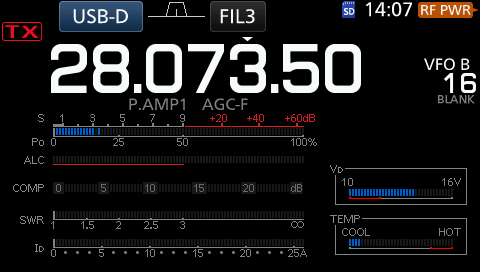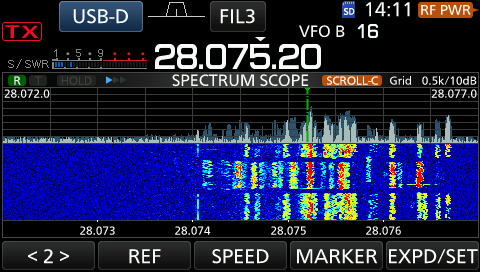Recently, I saw a newcomer's post on Twitter regarding his first WSJT-X session. I noticed right away that he only decoded a handful of stations, but those with supposedly extremely good reports. This is what happens when you set your receive bandwidth extremely low. This means that you only receive signals that lie within this range.
If we remember again our education, we find out that a normal report refers to a bandwidth of 2.5kHz. So, if I tighten my filters on the TRX (as is often done for CW, for example), the SNR values displayed there are of course no longer comparable to 2.7k or even 3k bandwidth.
For clarification I have set my bandwidth on the IC-7300 to 50 Hz. The first try I did somewhere, it came out S3 on the S-meter

and I was already positive at 30db SNR-ratios:

Then I looked for the peaks on the spectrum

and turned it to S8-S9.

I came out at 45 db positive (related to 50 Hz). I also decoded +51 (unfortunately not on the screenshot).

These values say nothing at all without the reference to 50 Hz. By the way, my antenna was 2 x 1.5m wire inside the apartment, so for sure it was NOT my antenna.
Back-calculation to true reports can then be performed using the "Eb/N0 (energy per bit to noise power spectral density ratio)" formula. Who is interested in this can check out Wiki.
 ka9q.net
ka9q.net